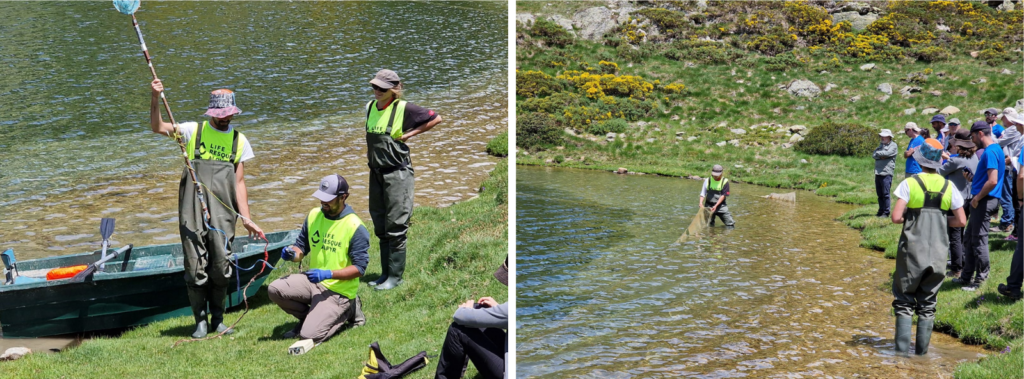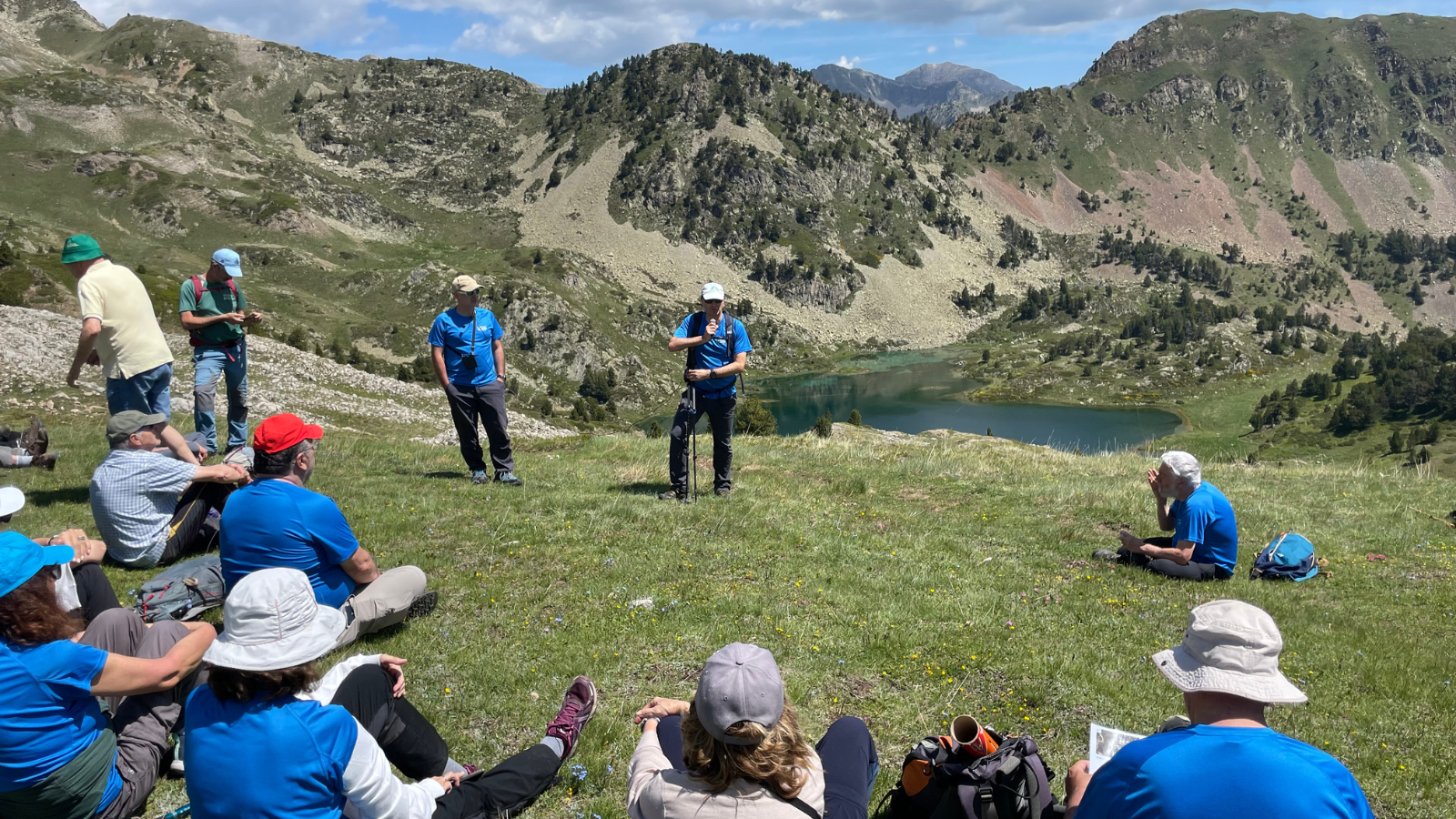Between June 25th and 29th, 2024, the XXXVII Field Days of Physical Geography were held in the Pyrenees of Lleida, organized by the Research Group in Mountain Areas and Landscape (GRAMP) of the Department of Geography and the Botany Unit of the Autonomous University of Barcelona, in collaboration with the Alt Pirineu Natural Park.
Under the motto “Multiple perspectives for studying landscape evolution: Pyrenees 2024” various itineraries were proposed to explore the natural values of Alt Pirineu, including its habitats, species, geodiversity, and human influence on the landscape over time. These routes took place within the Alt Pirineu Natural Park and the Aigüestortes i Estany de Sant Maurici National Park, as well as their surrounding areas.
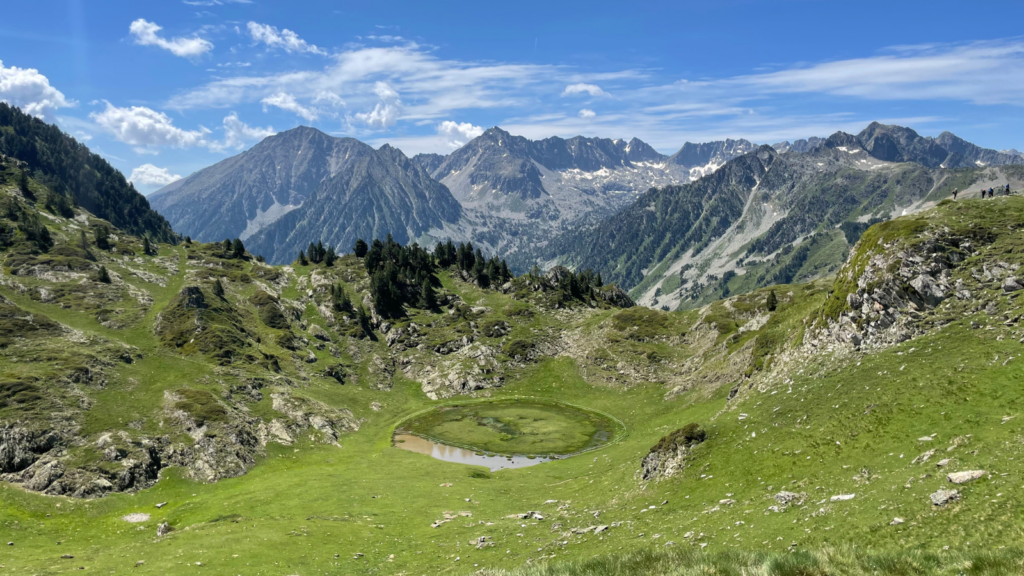
Actions for permanent and temporary exclusion of livestock in peat bogs
The first outing, in which we participated, took place on June 25th at the Estanyeres peat bogs. This visit provided a firsthand opportunity to observe the effects of livestock exclusion enclosure experiments. Such experiments are invaluable for understanding how herbivore pressure affects plant communities and soil dynamics.
By completely or partially eliminating herbivore activity, we witnessed significant changes in plant growth conditions. This approach mirrors other experiments manipulating biological communities, such as removing trout from ponds to observe their impact on aquatic ecosystem dynamics.
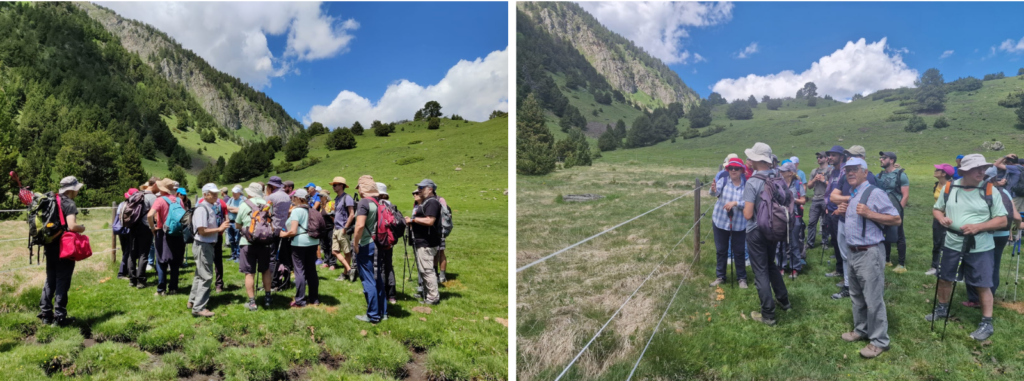
One of the primary conservation goals in these areas is the restoration of superficial soil, often degraded by the trampling of cows and horses. While plant communities in these regions are adapted to moderate grazing, they are susceptible to overgrazing.
Therefore, efforts are underway to maintain an intermediate grazing regime within temporary enclosures, aimed at evaluating whether this management strategy is sufficient to sustain ecological balance and improve the stewardship of these spaces.
Muntanyó d’Àrreu Lake, a unique place
The second visit was to Muntanyó d’Àrreu Lake, located at the head of the Àrreu valley. This shallow lake (approximately 13 meters deep) has a small basin. Below Muntanyó Lake lies an ancient sediment-filled basin, now forming a series of extraordinary peat bogs, a rarity in the Pyrenees.
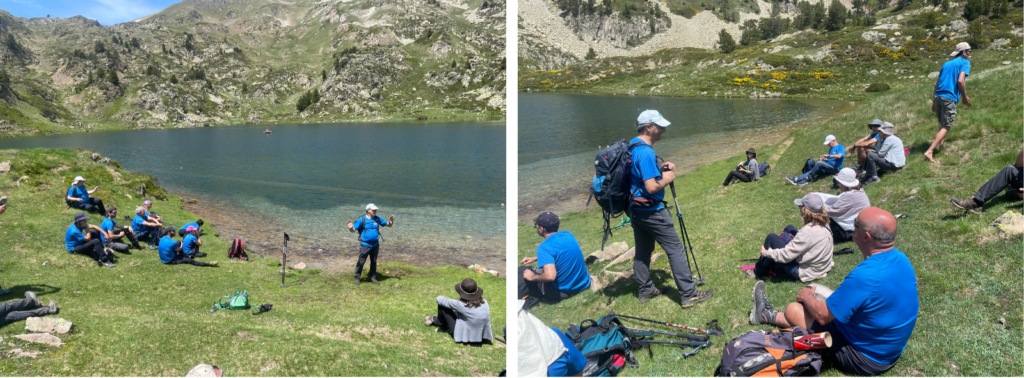
Situated in a limestone basin, Muntanyó d’Àrreu Lake stands out within our region for its exceptional characteristics among lakes. It boasts a rich macrophytic flora, with up to four different species of the Potamogeton genus thriving here.
Currently, actions are underway at the lake to eradicate the minnow, a small cyprinid introduced as live bait for trout fishing.
